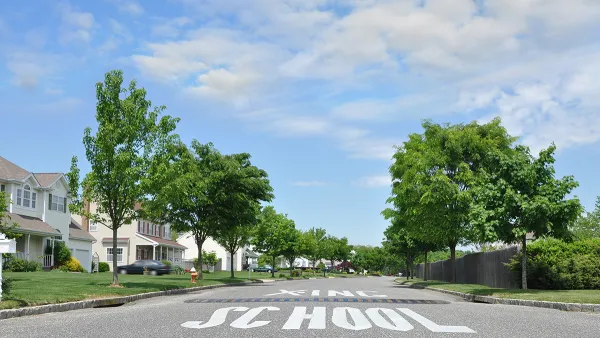It's almost like the Great Recession and the Great Urban Renaissance never happened, as Americans are moving to the suburbs and the Sunbelt than to the nation's urban areas.
Jed Kolko breaks the news of the latest population figures for 2015, as released this week by the U.S. Census Bureau. The big winners, according to Kolko's analysis: the suburbs and the Sunbelt.
Here's how Kolko summarizes the latest population data:
After volatile swings in growth patterns during last decade’s housing bubble and bust, long-term trends are reasserting themselves. Population is growing faster in the South and West than in the Northeast and Midwest, and faster in suburban areas than in urban counties; both of these trends accelerated in 2015.
Kolko provides lists of the fastest growing metro areas, the fastest growing large metro areas, and a few other lists, including lists of metro areas with the steepest population declines. Kolko also shares three trends as takeaways from the data, with more detail provided in the article:
- An accelerating shift of population toward the Sunbelt.
- A recent slowdown in population in urban counties.
- Metropolitan areas with at least one million people grew faster than midsize and smaller metros.
An article by Laura Kusisto for the Wall Street Journal, which follows on Kolko's reporting, argues that the U.S. Census data supports the thesis that the housing boom and bust of the last decade "merely created a temporary disruption" in the way Americans live.
FULL STORY: 2015 Population Winners: The Suburbs and the Sunbelt

National Parks Layoffs Will Cause Communities to Lose Billions
Thousands of essential park workers were laid off this week, just before the busy spring break season.

Retro-silient?: America’s First “Eco-burb,” The Woodlands Turns 50
A master-planned community north of Houston offers lessons on green infrastructure and resilient design, but falls short of its founder’s lofty affordability and walkability goals.

Delivering for America Plan Will Downgrade Mail Service in at Least 49.5 Percent of Zip Codes
Republican and Democrat lawmakers criticize the plan for its disproportionate negative impact on rural communities.

Test News Post 1
This is a summary

Test News Headline 46
Test for the image on the front page.

Balancing Bombs and Butterflies: How the National Guard Protects a Rare Species
The National Guard at Fort Indiantown Gap uses GIS technology and land management strategies to balance military training with conservation efforts, ensuring the survival of the rare eastern regal fritillary butterfly.
Urban Design for Planners 1: Software Tools
This six-course series explores essential urban design concepts using open source software and equips planners with the tools they need to participate fully in the urban design process.
Planning for Universal Design
Learn the tools for implementing Universal Design in planning regulations.
EMC Planning Group, Inc.
Planetizen
Planetizen
Mpact (formerly Rail~Volution)
Great Falls Development Authority, Inc.
HUDs Office of Policy Development and Research
NYU Wagner Graduate School of Public Service




























